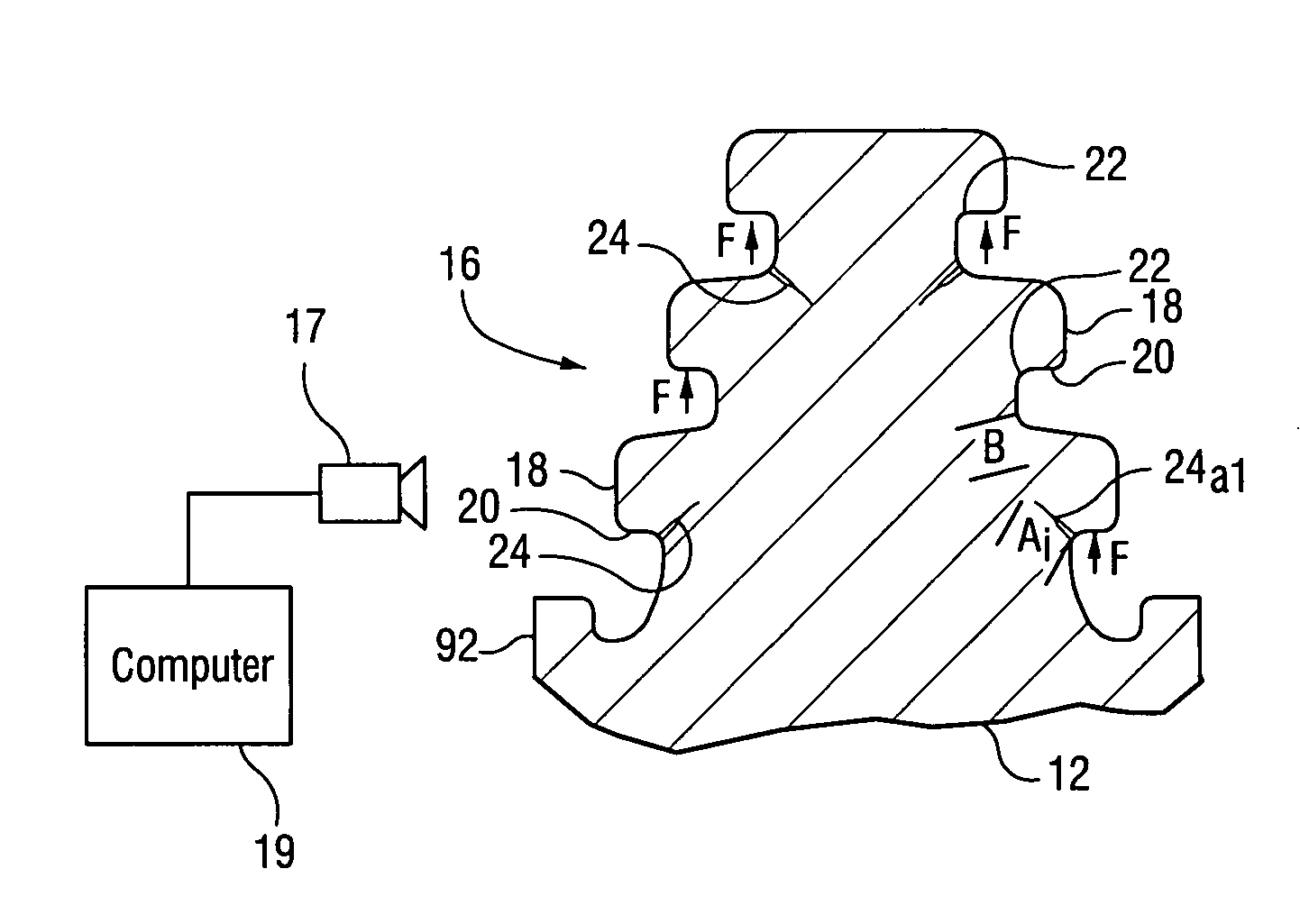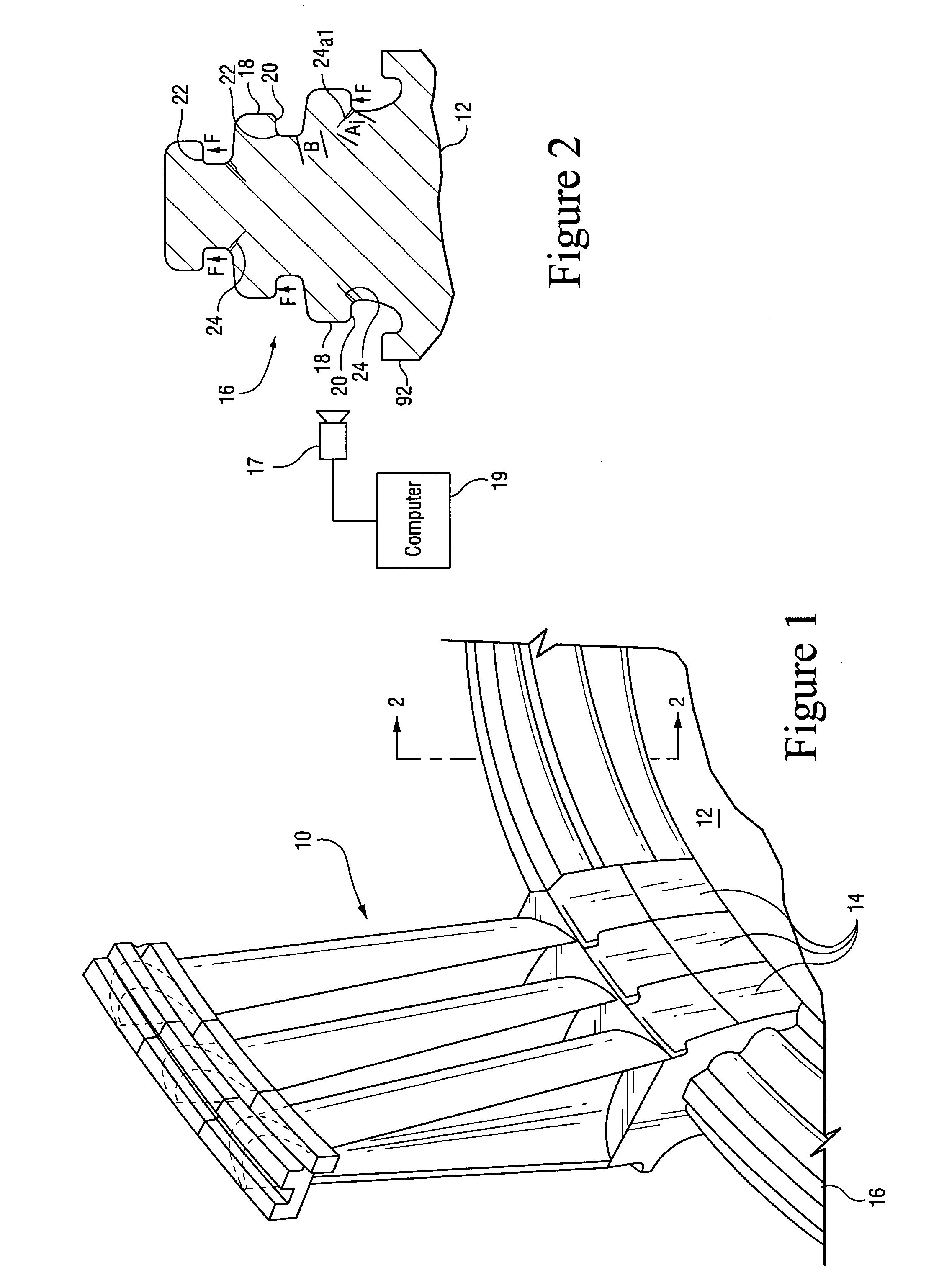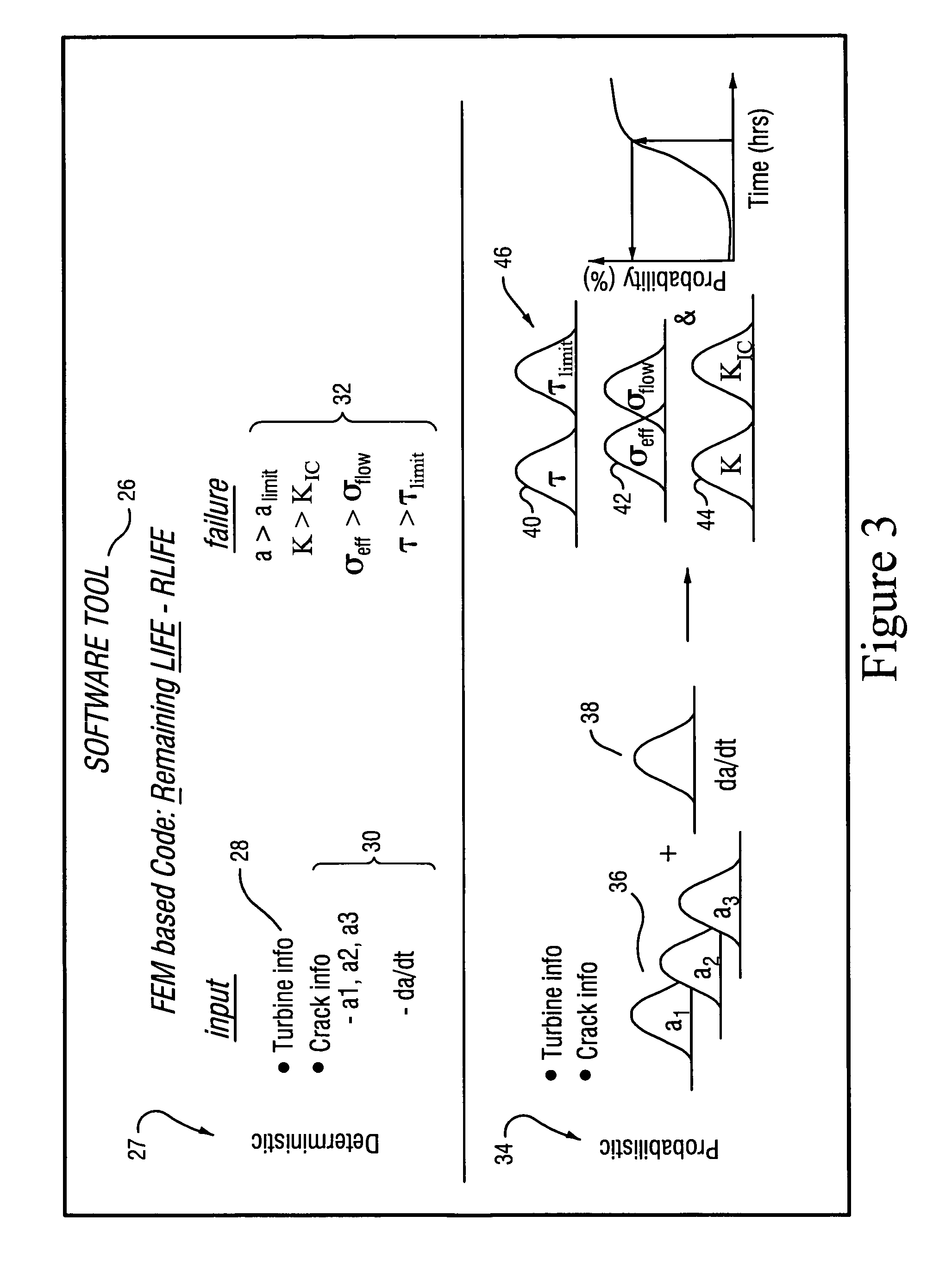Method and system for assessing life of cracked dovetail in turbine
a technology of cracking and dovetails, applied in the field of steam turbines, can solve the problems of high stress on the dovetail connection between the bucket and the wheel, failure of the wheel hook, and easy wear and cracking of the dovetail
- Summary
- Abstract
- Description
- Claims
- Application Information
AI Technical Summary
Benefits of technology
Problems solved by technology
Method used
Image
Examples
Embodiment Construction
[0019]FIG. 2 is a cross-sectional diagram of a tangential dovetail connector 16 for a turbine wheel 12. The dovetail connector is at the outer circular rim of the wheel. The connector generally comprises a inverted “V” shape having a series of ridges 18 extending outwardly from the sides of the connector. These ridges 18 are generally referred to as “hooks” of the connector. The hooks provide an attachment for the matching dovetail 14 at the base of each turbine bucket 10.
[0020]The hooks 18 of the dovetail connector are generally loaded along their underside surfaces 20. The loading occurs as the matching hooks of the dovetail connector of the turbine bucket abut against the underside surfaces 20 of the dovetail connector on the wheel 12. During rotation of the wheel, centrifugal forces act in a radial direction. The centrifugal forces apply radial forces (F) to the underside surfaces 20 on the dovetail connector 16 of the wheel. These forces are proportional to the rotational speed...
PUM
 Login to View More
Login to View More Abstract
Description
Claims
Application Information
 Login to View More
Login to View More - R&D
- Intellectual Property
- Life Sciences
- Materials
- Tech Scout
- Unparalleled Data Quality
- Higher Quality Content
- 60% Fewer Hallucinations
Browse by: Latest US Patents, China's latest patents, Technical Efficacy Thesaurus, Application Domain, Technology Topic, Popular Technical Reports.
© 2025 PatSnap. All rights reserved.Legal|Privacy policy|Modern Slavery Act Transparency Statement|Sitemap|About US| Contact US: help@patsnap.com



